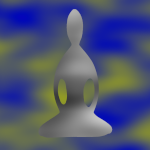Dear Friends,
I was quite moved by Bhante Gunaratana’s description of how mindfulness of breathing can connect us to all beings:
But all living beings breath. Breathing does not differentiate among Buddhists, Christians, Hindus, Sikhs, Jews, Muslims, and Zoroastraians. Nor does it distinguish between rich and poor, capitalists and socialists, or conservatives and liberals for that matter. When we focus on the breath, we become mindful of the universal nature of all beings.
This relates to a poem I came across:
Connections
by Nancy WoodEvery time we take a breath, we become the universe.
The very moment of creation is contained in us
and passes on to rocks and trees, animals and fish.The old ones say the essence of life
is in water and wind, earth and breath, fire and bone,
but most of all in breath,
our first connection to the elk, the hawk, the bear, and the buffalo.Without breath, no connection.
Without connection, no creation.
Without creation, no breath.
This is the sacred circle of life, unbroken.
The discourse on the Four Foundations of Mindfulness suggest that a practitioner go to the forest or an empty hut to practice. Being able to go to a quiet place for meditation would be ideal, but many of us don’t have that opportunity in our daily lives. That’s why I suggest “take your breath to work!”
Sure, that sounds silly – after all, we wouldn’t be functioning if we weren’t breathing, but as Bhante says,
… until we pay attention to the process, we do not know what is really happening. But when we focus the mind on the breath, we discover everything related to the breath. Training in this way is so essential to our peace of mind…
I find that even a small moment of intentionally focusing on the breath can be greatly beneficial. Many teachers recommend a short pause at some cue, like before you answer your phone or respond to a text or email.
Just this breath – in, out. Is it long or short? Do we feel it at the nose, chest, stomach, and/or elsewhere? Do you notice feelings or sensations changing?
One curious moment… and then return to your task – but notice how you feel now… are you calmer, more focused, less agitated? If so, then appreciate that, so that your mental pathways will start to learn what works! And if not, carry on with your day, and see what happens next time…
If you’re looking for a very short breathing meditation, Diana Winston has a 5 minute version available on the UCLA Mindful Awareness Research Center site:
http://marc.ucla.edu/mindful-meditations
What have you noticed about your experience with mindfulness of breathing? Feel free to share a comment below.
With best wishes,
Andrea

I love starting my day with your messages and beautiful poems. I always become more aware of something that helps me in this journey we share. Defining an intention was very helpful to me yesterday in setting a clearer intention with more depth to it and so it has been easier to come back to it in a moment of mindfulness. And of course, the more often I come back to my intention, the more likely that I can take action to support my intention. Thank you, Andrea, for this gift.
In my journey as a physician I have had the great privilege of being present at many births. In the uterus babies actually breathe in and out the amniotic fluid (ocean water of a sort). The lungs of course are largely collapsed. When the newborn comes out there is a moment of apprehension. The baby is blue…. the lips are puckered and the eyes are scrunched shut. & then sudden… in a rush the baby gulps and gasps and lets out a cry and that first breath takes place…. the moment of truly being alive. I have also had the privilege of being present many times with people dying. The last breaths are called agonal breaths…. uncoordinated and almost random. The family is around the bed and then that last peaceful breath occurs…. one last breath and then silence… no more breath. There is a miracle and a mystery to the book marks of those two breaths in the air of planet earth…. the first and the last.